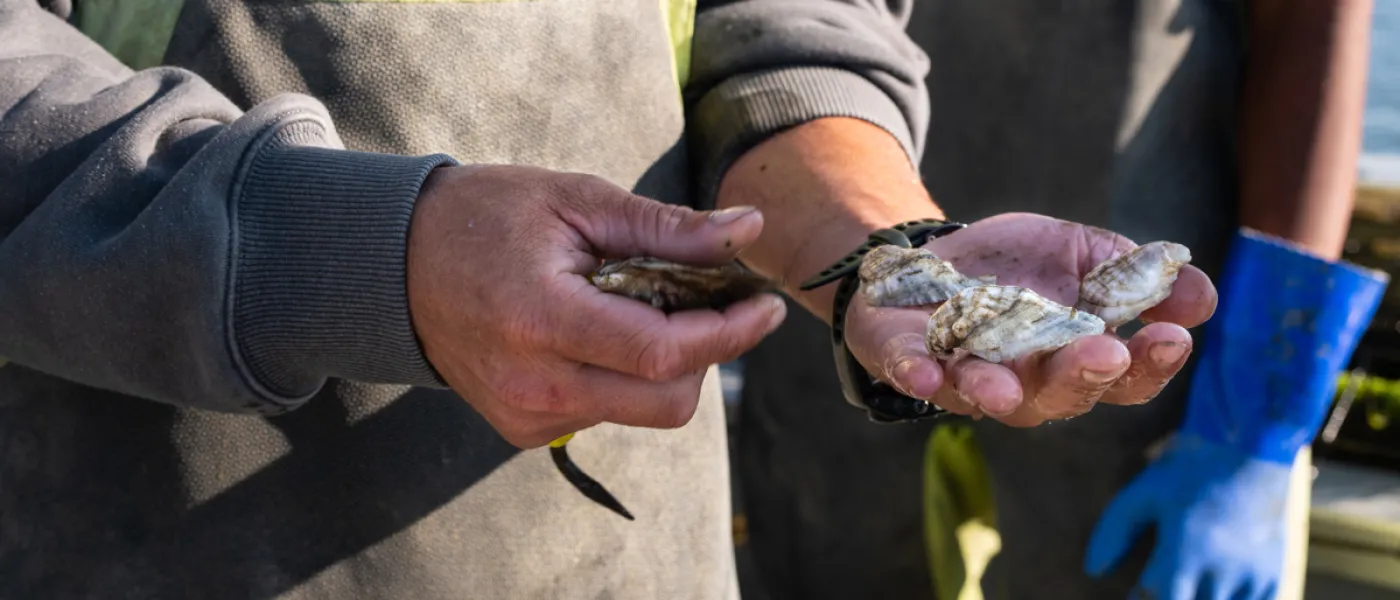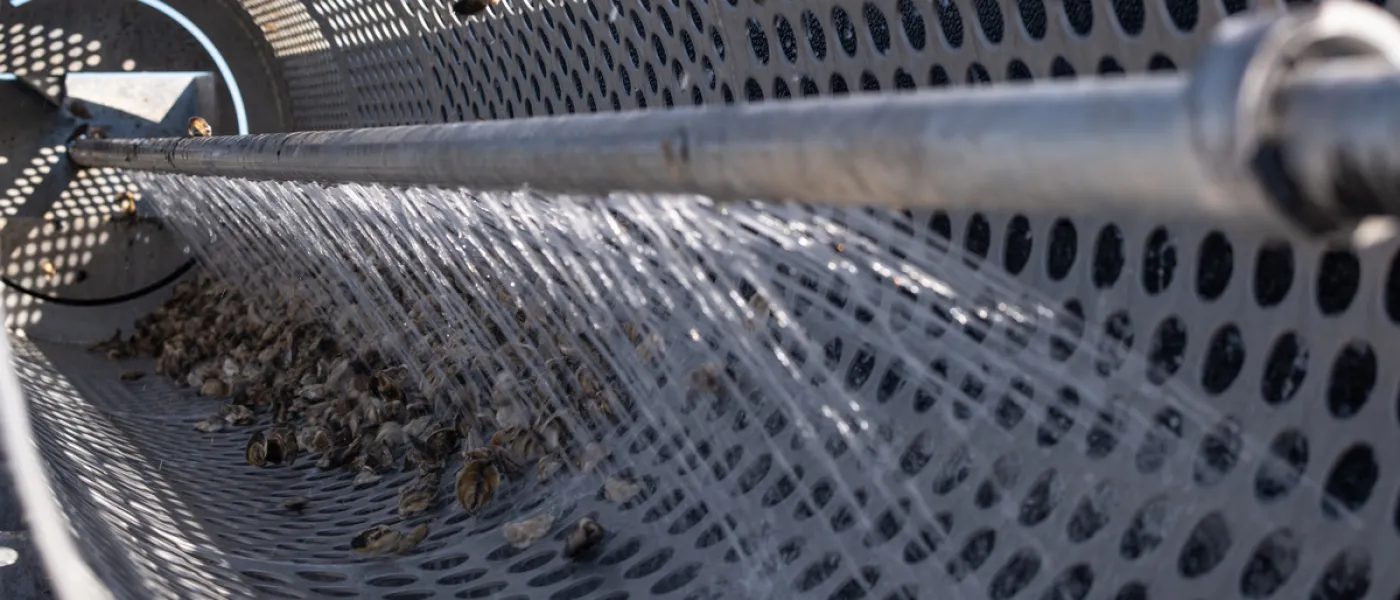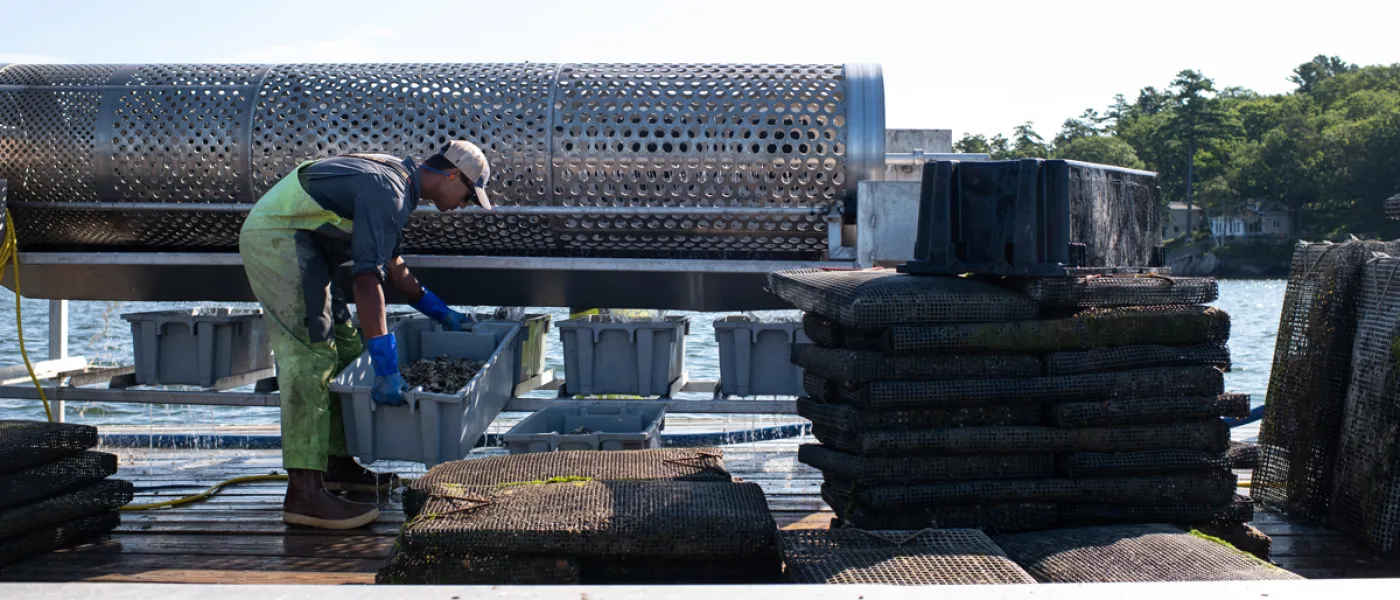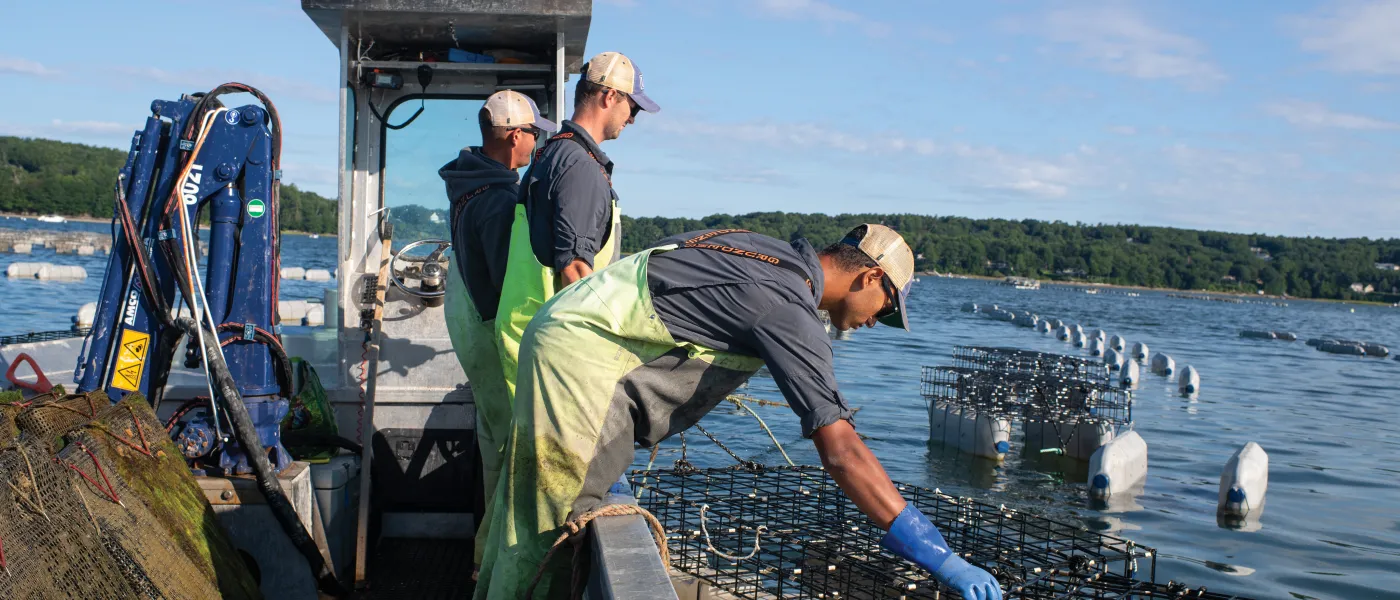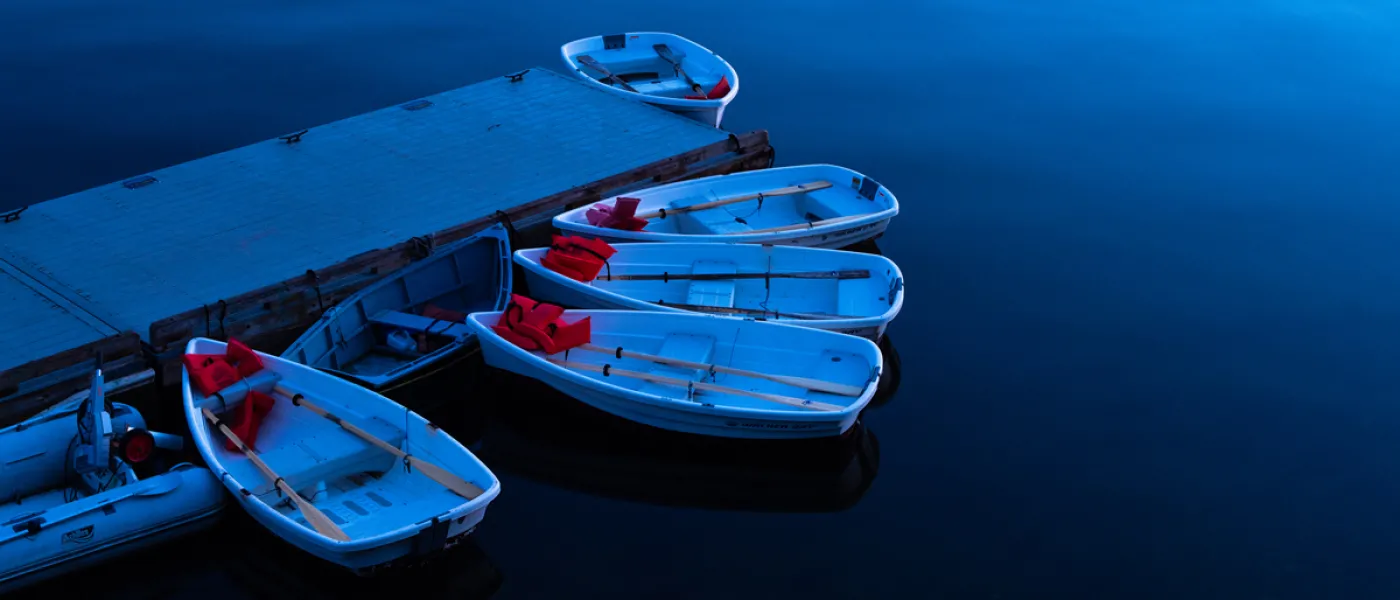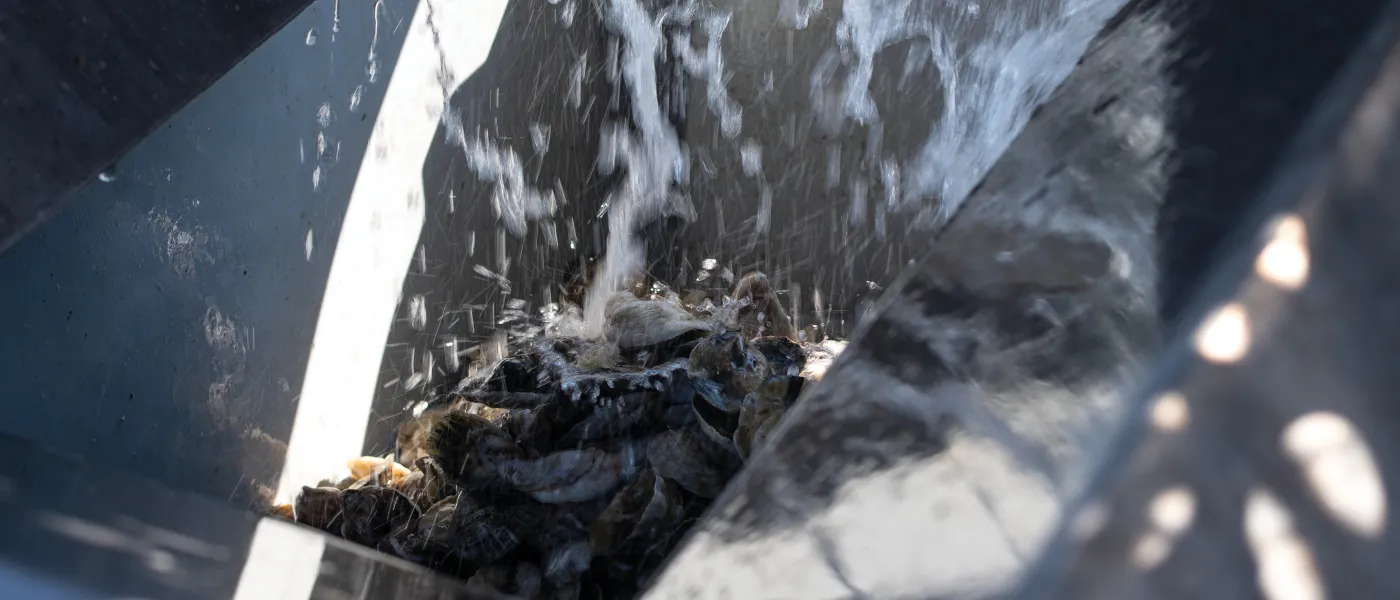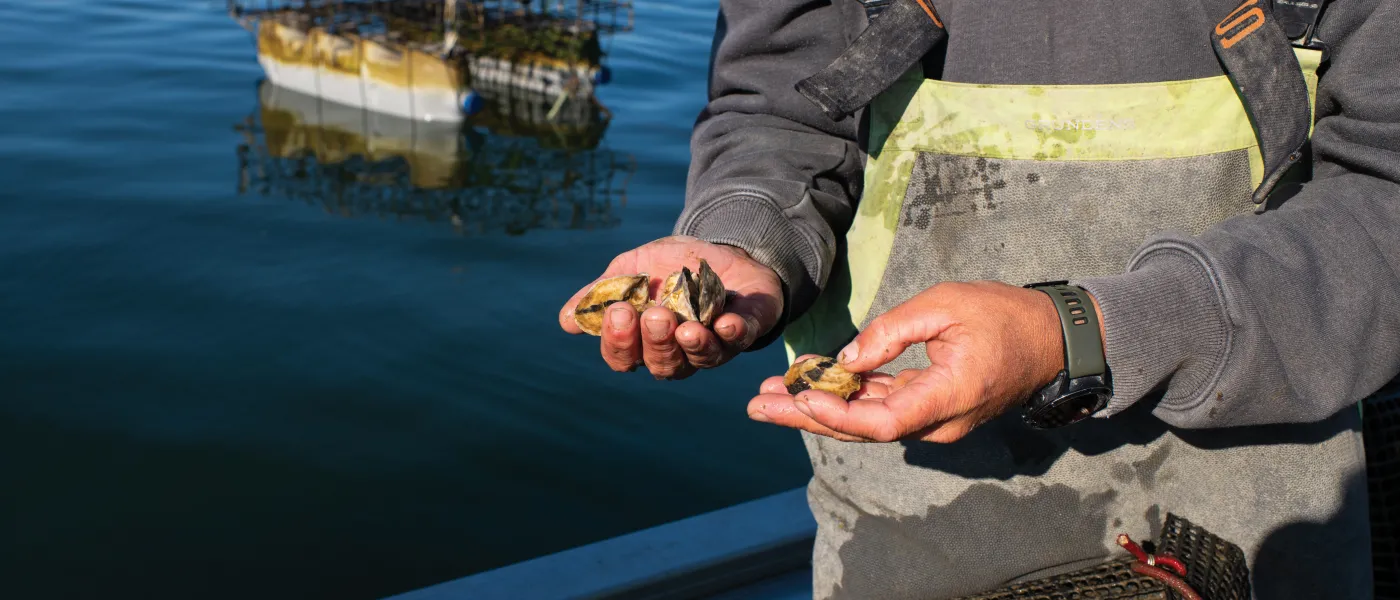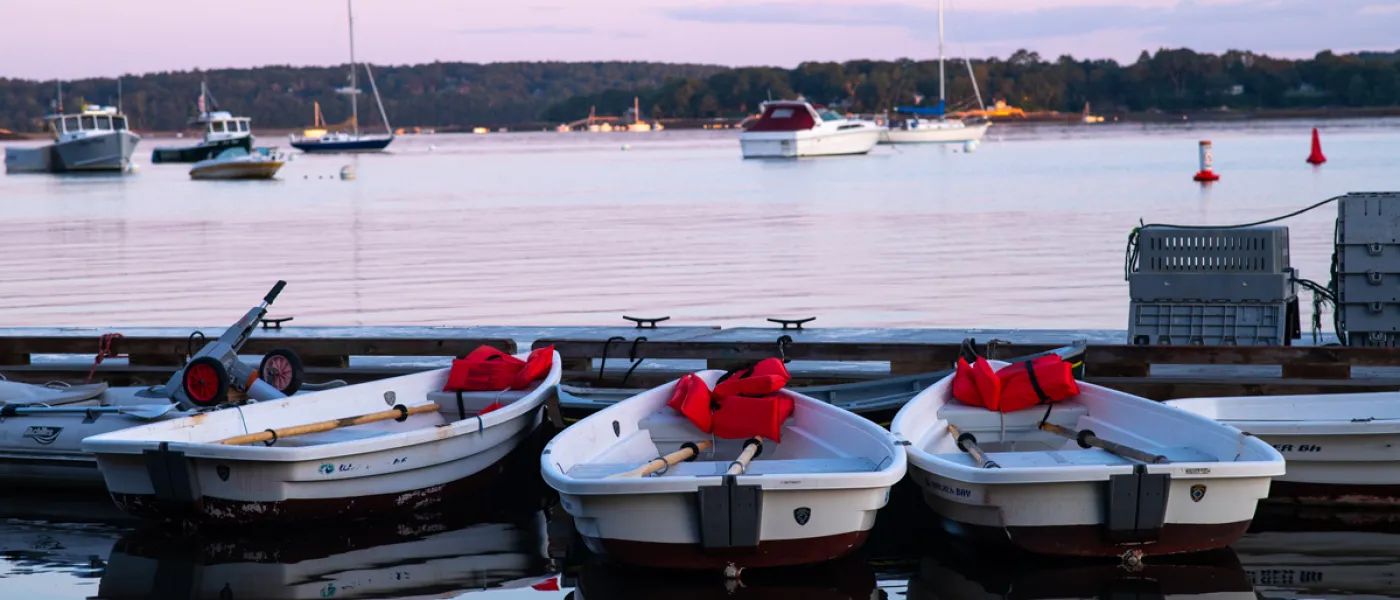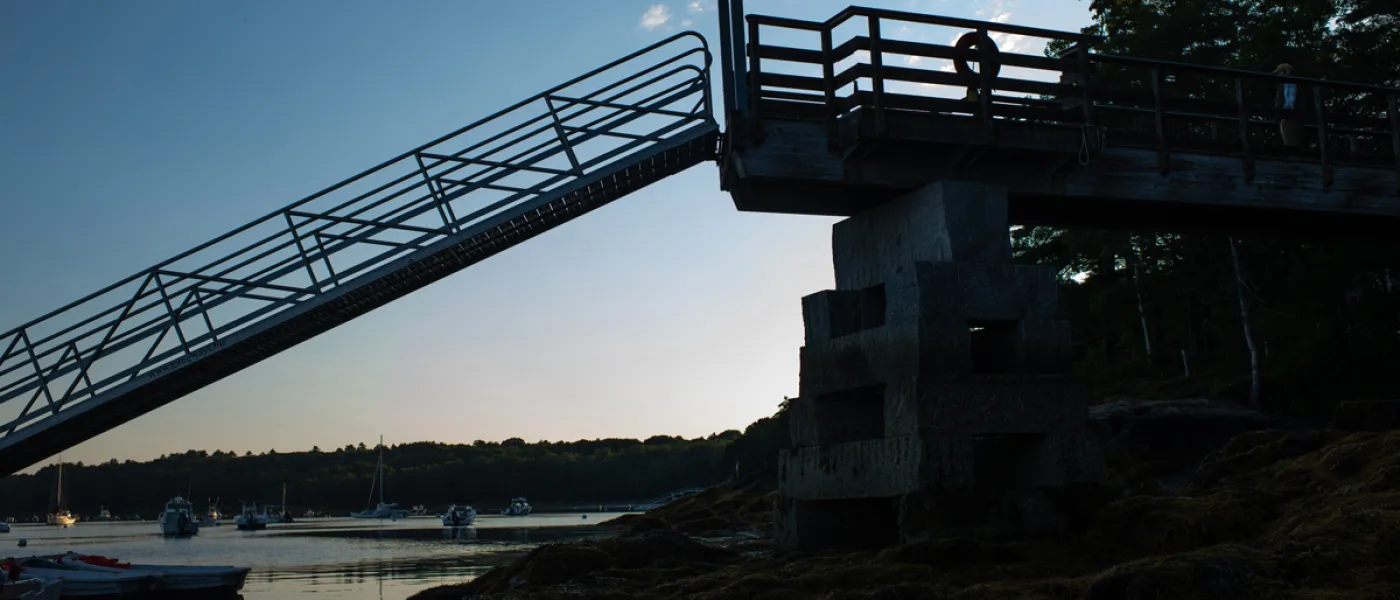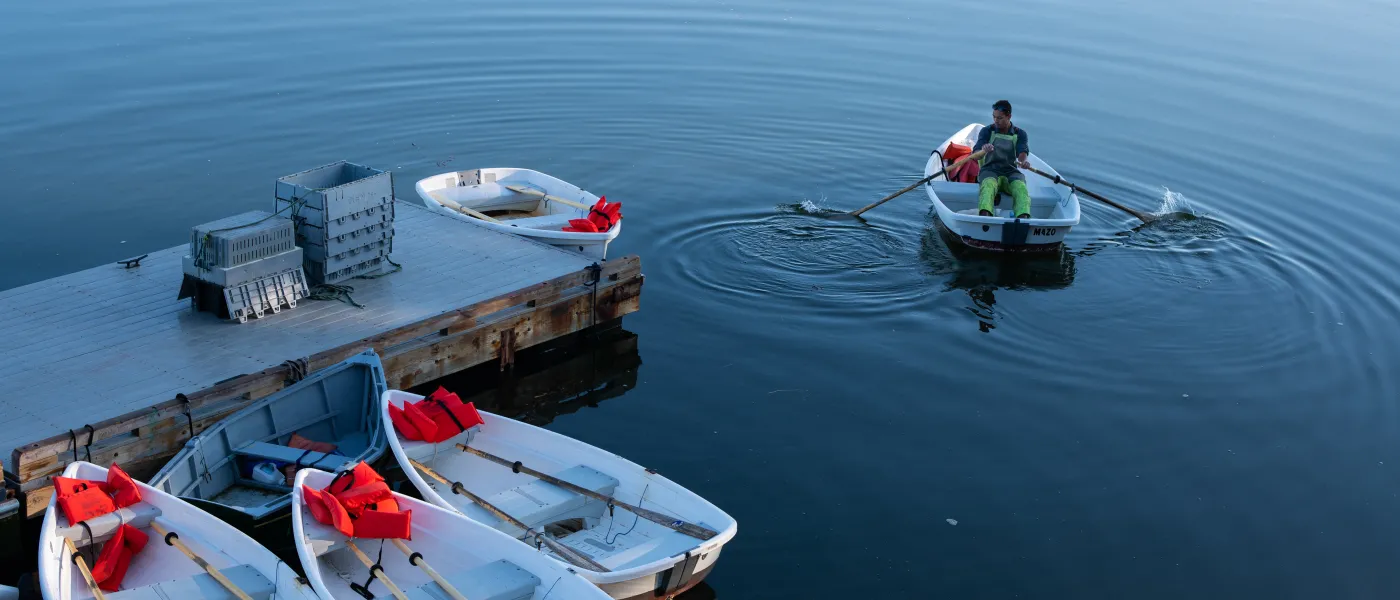New Tides on Sustainable Aquaculture
by Zach Brockhouse
It’s sunrise on Cousin’s Island. The dock at Madeleine Point, just down from a dirt parking lot reserved for commercial fishermen, juts into the water where first light sparkles gently around the moorings. This place, where multiple rivers pour into Casco Bay, is an ideal location to grow oysters.
Michael Scannell arrives at the dock for his internship at Madeleine Point Oyster Farm. The morning light leaves a trail as he rows out to the oyster farm’s aluminum boat. “This internship is giving me the opportunity to make a career for myself on the water,” he said. “It’s something I’ve dreamed about.”
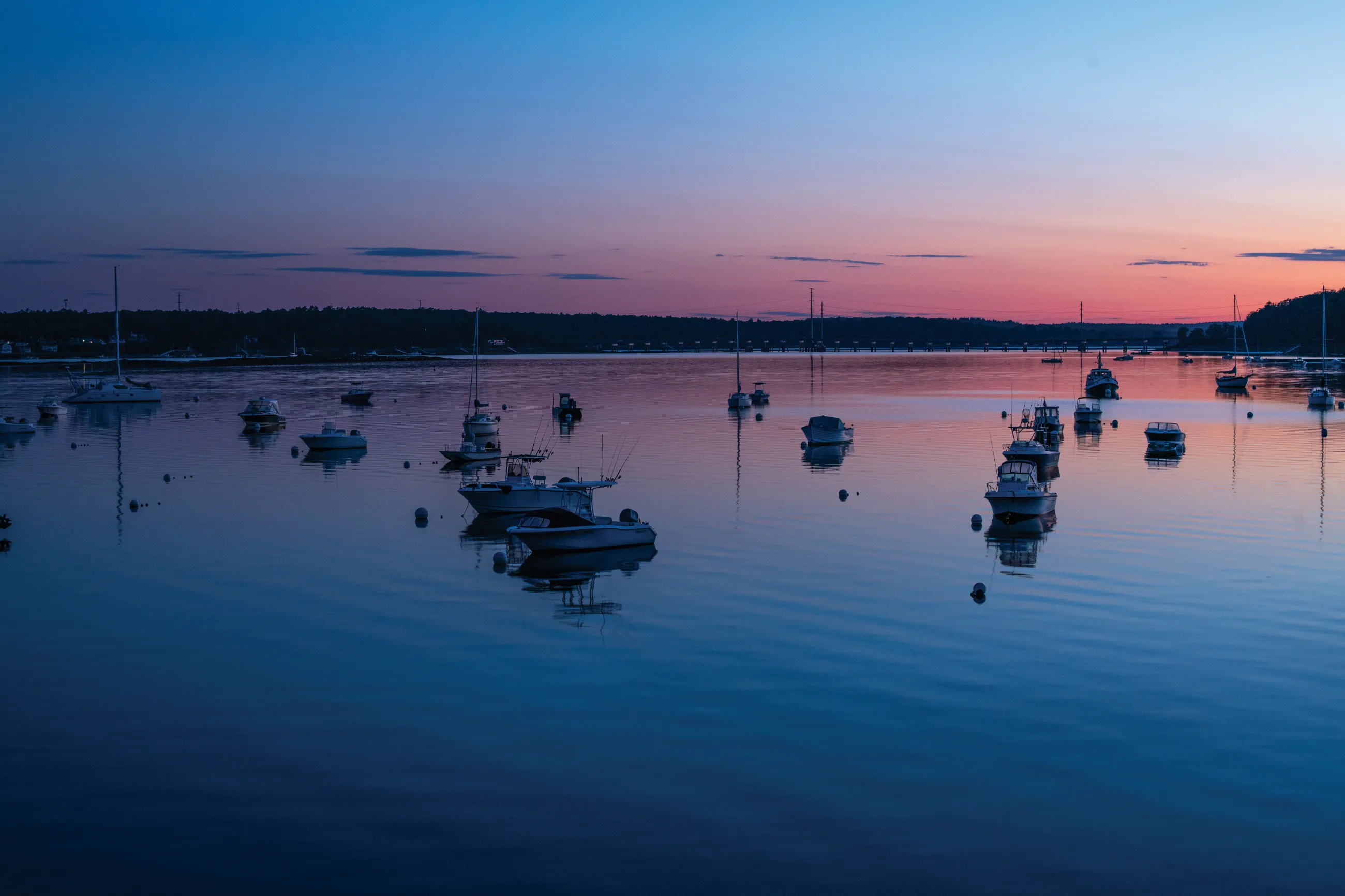
Scannell is a senior marine affairs major at UNE. After graduation, he plans to work in aquaculture until he’s ready to attend law school, with the goal of helping aquafarmers negotiate leases for their farms. “This internship really has opened my eyes to aquaculture,” Scannell said. “There is so much more to it than people think about.”
He maneuvers the boat back to the dock to pick up the rest of the crew. The boat pulls up to the first farm site. Metal cages with black plastic floats are set in horizontal lines next to each other. Scannell and the other men from the oyster farm work together, their movements synchronizing as they pull up each cage and attach it to the side of the boat. Using a hook, they grab each of the bags filled with oysters out of the cage, and Scannell leans them against the hull.
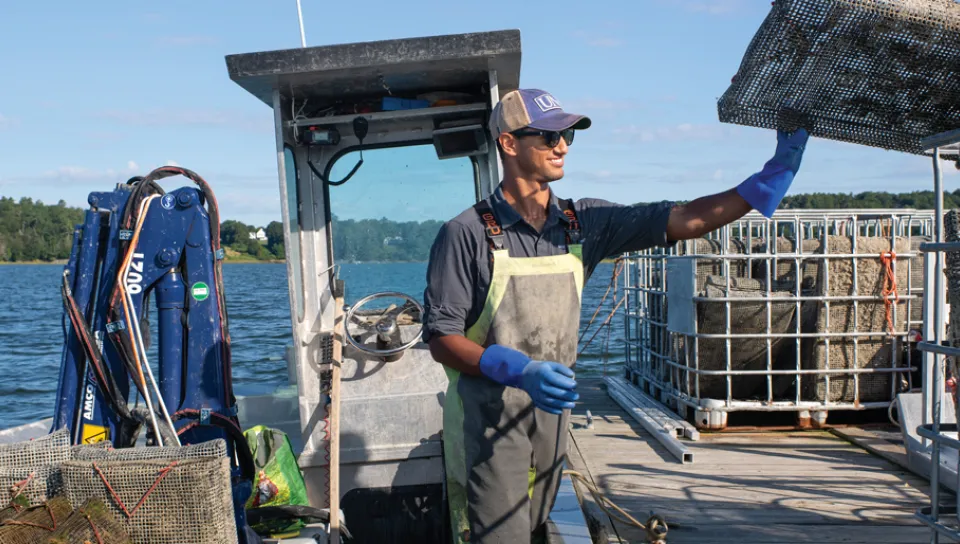
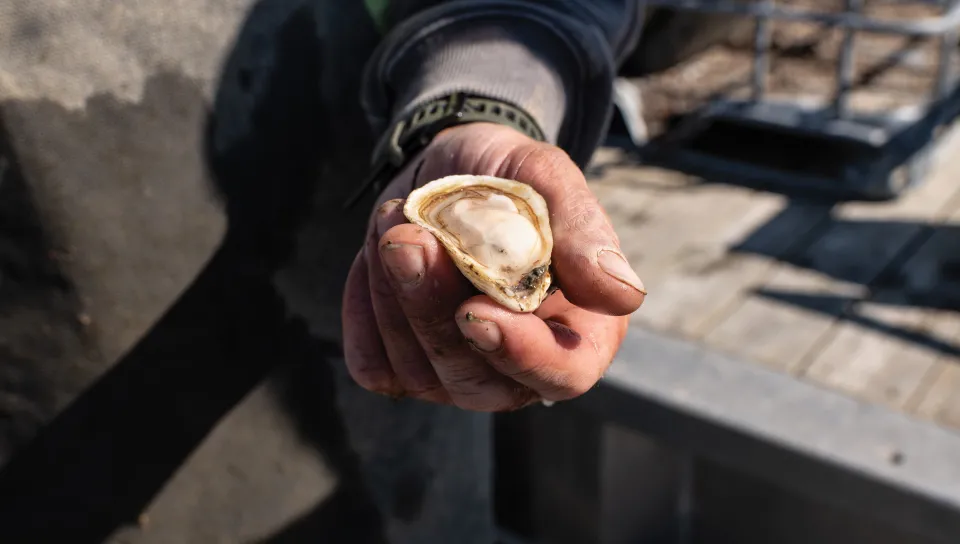
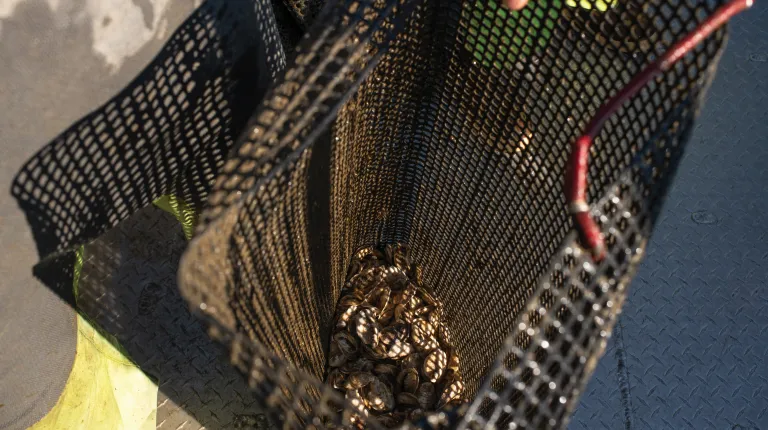
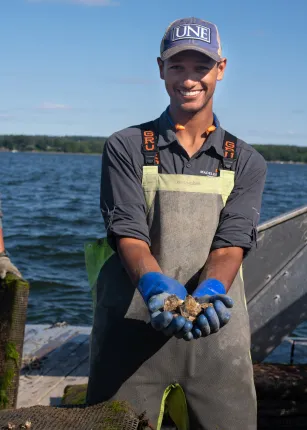
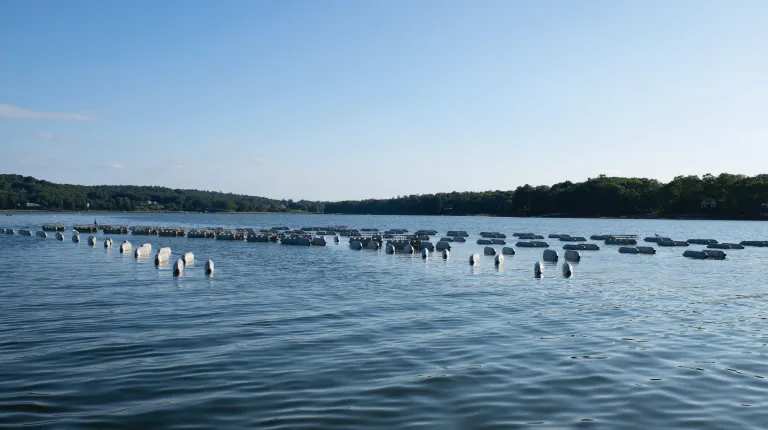
Water sluices everywhere as the boat makes its way to a floating skiff bearing a long, cylindrical-looking tube known as a tumbler. Holes of various sizes are cut to allow shells and detritus to fall through. They start the electric water pump, turn on the generator, and watch as the machine grumbles to life. The seawater they pump into the tumbler cleans the biofouling off the shells while the holes sort the oysters by size.
Post-tumbling and back in bags, the oysters get plenty of water flow and phytoplankton. When they are large enough, they will be harvested for customers. “Rotating the oysters helps them to grow,” Scannell says. “The tumbler shaves off a little of the new growth and encourages them to grow bigger.”
Scannell looks out on the shining bay peppered with islands. A harbor seal pokes its head out of the water and looks back at him. An osprey wheels loudly overhead.
“Casco Bay is changing,” he said. “I see progress every day here at the farm. It’s nice to know that the oysters we grow are sustainable. They help keep these waters fertile and make Casco Bay better for all of us.”
Bonus Content: Sunrise on an Oyster Farm
